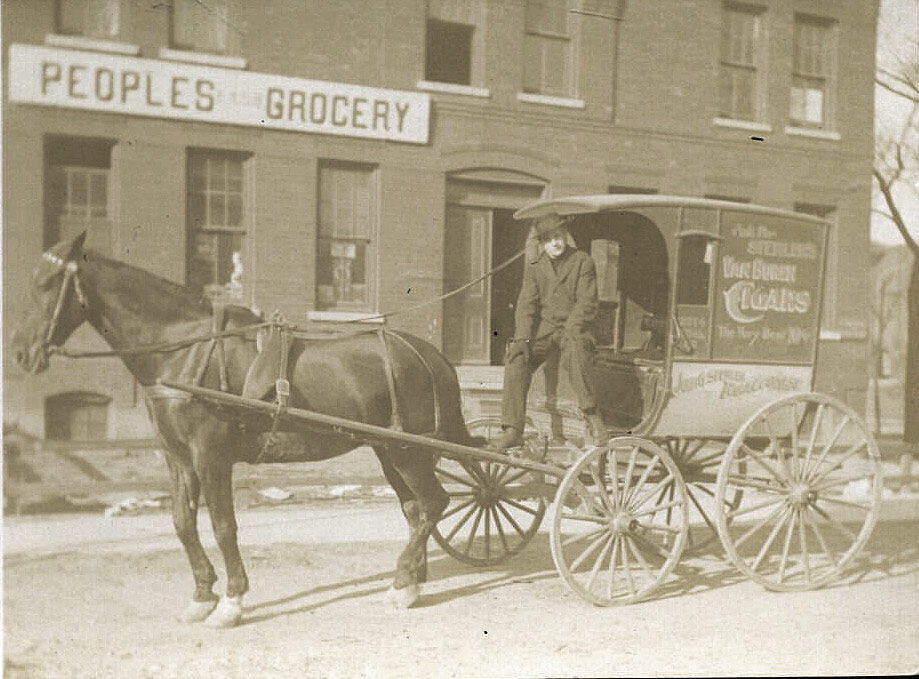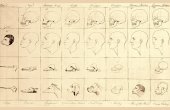Ida B. Wells and People’s Grocery

Coppery like a penny, thick like bad molasses, even a little gamey like a possum. The white conductor’s blood in her mouth probably didn’t taste good, but it probably didn’t taste bad either. Ida B. Wells sat firmly while the Memphis streetcar man gripped her body, tried to forcibly remove her from the “First class ladies car” on a train from the Poplar Station to Northern Shelby County. Wells took a bite out of that guy until he “bled freely,” he would later plead in court. Wells sued Southwestern Rail and won a $500 settlement. The ruling, however, was ultimately overturned by the Tennessee Supreme Court.

Wells occupied that seat on September 15, 1883. Born about an hour southeast in Holly Springs, Mississippi, in 1862, Wells lost her parents and young brother to the devastating 1878 Yellow Fever Epidemic. Her parents were involved with Reconstruction-era politics and the democratization of education; their daughter would carry on that mantle as a radical teacher in her own right. She studied at the freedmen’s school, Rust College, at Fisk University during the summer in Nashville, and also at LeMoyne Owen College in Memphis.
The loss of both her parents put Wells in the position of taking care of her five siblings. The 1878 Yellow Fever Epidemic ravaged the South and especially the port cities and distribution hubs up and down the Delta. Over 4,000 died in New Orleans, 1,000 in Vicksburg, and over 5,000 in Memphis. Rich white people had the means to flee the hot spots, but African American communities in larger cities sheltered in place and created disaster relief and mutual aid networks for the poor and vulnerable who did not have steady employment or housing and for those who lacked ventilation or sewage systems and access to safe water sources. 1
The history of the food justice movement is the history of mutual aid.
The history of the food justice movement is the history of mutual aid. Benevolent associations and mutual aid societies, sometimes referred to as secret societies, had a long history in many antebellum southern cities. Sometimes they were aligned with churches, sometimes they were not. What united most was a commitment to shared resources, autonomous care, and collective power. This took the form of financial assistance through death benefits, insurance, health care, and vittles for the poor and hungry.2
Toward the end of the 1880s, strike waves rolled and disenfranchised laborers regrouped and reorganized labor and communities, as we saw in Chicago. There was an upswing in the formation of labor unions, alliances, and food and farm cooperatives during this period nationwide, with the unifying goal to foster solidarity, land justice, and economic power in new ways.3 For example, between 1889 and 1892 the Colored Farmers’ Alliance would amass over 1 million members. The cooperative union became a clearinghouse for organizations that preceded it, like the Colored Farmers’ Union, the Cooperative Workers of America, and Colored Wheels. Some chapters had publishing wings; many led alternative academies in farming, offered debt relief and mortgage loan assistance, and created opportunities for cooperative exchange and distribution through the original food hubs.4 This was the new world of reorganized food provisioning and labor that shaped Parsons’s Chicago and Wells’s Memphis.
When it came time to bring those farm products to market, the 19th-century grocer had control over transactions, with access to goods behind the counter mediated by the counter space that separated the buyer from the merchant.5 The grocer and counter clerks would take down orders in pencil on the back of the sacks, grind coffee beans, weigh out sugar and flour, and so on.
It wasn’t until 1916 that Piggly Wiggly opened on 79 Jefferson Avenue in Memphis. It was the first fully self-service grocery store and precursor to the supermarkets of today. Unless you found yourself in an open-air food space like the Haymarket, a customer relied on an exchange with the grocer and clerks.
Memphis was number five on the list of the biggest wholesale grocery markets in the United States at the end of the 19th century.6 The white grocer William Barrett operated what was first the only grocery in the Curve neighborhood of Memphis. Barrett was taking advantage of the access deficit in the outskirts of the city. This is a glimpse into the early history of what I will call food apartheid, or what some policymakers would call food deserts. In the words of writer and farmer Leah Penniman, the term food apartheid “makes clear that we have a human-created system of segregation that relegates certain groups to food opulence and prevents others from accessing life-giving nourishment.”7 The saga of People’s Grocery shows how entrenched the history of human-made food apartheid is.

In what seems to be the only existing photograph of People’s Grocery, a dark horse pulls a Van Buren Cigar wagon and the driver is perched and looking directly at the camera. In the background we see a storefront with three windows and a big sign with PEOPLE’S GROCERY emblazoned. If only we could see inside those windows. It may have looked like William Barrett’s store on the inside in some ways, yet by virtue of its more cooperative structure the store differed because it restructured food access and community as well as the relationship between the grocer and customer.
Black folks were building power by owning their labor, claiming space, and documenting the terrors of white supremacy in the ever-expanding Bluff City sprawl.
Many of the working Black folks in the Curve and beyond contributed capital to collectively and cooperatively sustain People’s Grocery, opening it in 1889 as an alternative to William Barrett’s store. Writer and sociologist Zandria Robinson writes that People’s Grocery was also a beloved “destination for black people inside and outside the city.”8 Co-owned by 10 Black residents in the neighborhood, it was a financially successful food cooperative held in high regard by the Black community. Tommie Moss, Ida B. Wells’s friend, was the store’s director. Black folks were building power by owning their labor, claiming space, and documenting the terrors of white supremacy in the ever-expanding Bluff City sprawl.
Elite and working-class white Memphians alike invested in maintaining racial segregation through the changing neighborhood landscapes of the city in the 1890s. Historian Paula Giddings describes the racial local geographies of the neighborhood as they began to shift and as white communities began laying the groundwork for Jim Crow: “Whites were establishing racially exclusive areas within the city and abandoning outlying areas like the Curve to a large number of the poorer African American migrants who joined the biracial working class already residing there.”9 These shifts in landscape also included attempts to maintain exclusive white ownership and control of spaces for food provisioning like the grocery store.
In 1889, People’s Grocery was the first Black-owned cooperative grocery in Shelby County’s 14th civil district on the then outskirts of Memphis. Within three years the primary co-op organizers and owners were killed by a white lynch mob who accused Moss of “plotting a war against whites.” The story of People’s Grocery is a foreboding of future actions of white supremacist terrorism against Black businesses in East St. Louis, Illinois; Elaine, Arkansas; and Charleston, Houston, and Knoxville, as well as the destruction of “Black Wall Street” in the Tulsa Massacre of 1921.10
Anxious white business owners in Memphis were growing increasingly threatened by Black community power. Like in Chicago, Black community control over land and autonomous food provisioning was revolutionary and thus a target for state violence. White city officials and landowners codified segregation through attempts to control not only the ballot box but private and public spaces like grocery stores and curb markets. These same white boosters, property owners, and police units also relied on mob violence and the horrific public spectacles of lynching in their attempts to destroy Black power in Memphis.
Wells was 30 years old when the mob of white terrorists murdered her friends and destroyed the beloved People’s Grocery. “This,” Wells wrote, “is what opened my eyes to what lynching really was.”
While Wells was on a trip to New York, a local white-run Memphis newspaper wrote a smear piece and stoked the fires of violent white terrorists who threatened her life and burned down her newspaper office on Beale Street. Wells was writing prolifically about People’s Grocery in her newspaper The Memphis Free Speech and Headlight. She was shining the light on the targeted trauma inflicted by white vigilantes and the police as they tried to sustain a white-knuckle grip on the south.
Joining the other 5,000 Black people using, as Zandria Robinson describes it, “their economic and political power as citizens, laborers, and consumers to vote with their feet,” Wells left Memphis. Like Lucy Parsons, Wells chose exile. As an itinerant activist, Wells would build and transform vast networks of political education throughout the southern diaspora and on an international scale.
Less than a month after the People’s Grocery murders, Lucy Parsons wrote an editorial in the radical publication Freedom:
Never since the days of the Spartan Helots has history recorded such brutality as has been ever since the war and as is now being perpetrated upon the Negro in the South.… The whites of the South are not only sowing the wind which they will reap in the whirlwind, but the flame which they will reap in the conflagration.
Ida B. Wells traveled across the country and the globe to talk about white racial terrorism and municipal governance in all of its clutchy fragility and bloodthirsty desperation. Core to her anti-lynching crusade was the evisceration of the rape myth, exploding the idea that lynching was always retribution for white Southern womanhood. It was the violence at People’s Grocery that would reveal these truths to Wells.
Faron Levesque is a public historian, writer, and host, currently based in New York, born and raised in Memphis. This article is excerpted from their essay “Eat the Rich: Radical Food Justice in Memphis and Chicago,” which appears in the volume “Acquired Tastes: Stories About the Origins of Modern Food.” Their newsletter, The Bottomfeeders Banquet, explores labor and working class history, food justice, queer/trans revolt, and revolutionary learning.
- Jacqueline Jones Royster, ed., Southern Horrors and Other Writings: The Anti-Lynching Campaign of Ida B. Wells, 1892–1900 (Boston: Bedford, 2016), 10–11
- Tera W. Hunter, To ’Joy My Freedom: Southern Black Women’s Lives and Labors after the Civil War (Cambridge, MA: Harvard University Press, 1997), 70–72.
- Robin D. G. Kelley, Freedom Dreams: The Black Radical Imagination (Boston: Beacon Press, 2002), 41.
- Omar H. Ali, In the Lion’s Mouth: Black Populism in the New South, 1886–1900 (Oxford: University Press of Mississippi, 2010), 48–50.
- See Susan Spellman, Cornering the Market: Independent Grocers and Innovation in American Small Business (Oxford: Oxford University Press, 2016); and Tracey Deutsch, Building a Housewife’s Paradise: Gender, Politics, and American Grocery Stores in the Twentieth Century (Chapel Hill: University of North Carolina Press, 2010).
- Paula Giddings, Ida: A Sword among Lions; Ida B. Wells and the Campaign against Lynching (New York: HarperCollins, 2009), 175.
- Leah Penniman, Farming While Black: Soul Fire Farm’s Practical Guide to Liberation on the Land (White River Junction, VT: Chelsea Green Publishing, 2018), 4.
- Zandria F. Robinson, “After Stax,” in Unseen Light: Black Struggles for Freedom in Memphis, Tennessee, ed. Aram Goudsouzian and Charles W. McKinney Jr. (Lexington: University Press of Kentucky, 2018), 354
- Giddings, Ida: A Sword among Lions, 175
- The wave of lynchings across the United States in 1919 would be called the “Red Summer.” For more on the Red Summer, see Eve Ewing, 1919: Poems (Chicago: Haymarket Press, 2019), and Simon Balto, Occupied Territory: Policing Black Chicago from Red Summer to Black Power (Chapel Hill: University of North Carolina Press, 2019). See also Frederick Douglass Opie, Hog & Hominy: Soul Food from Africa to America (New York: Columbia University Press, 2010), 54.



